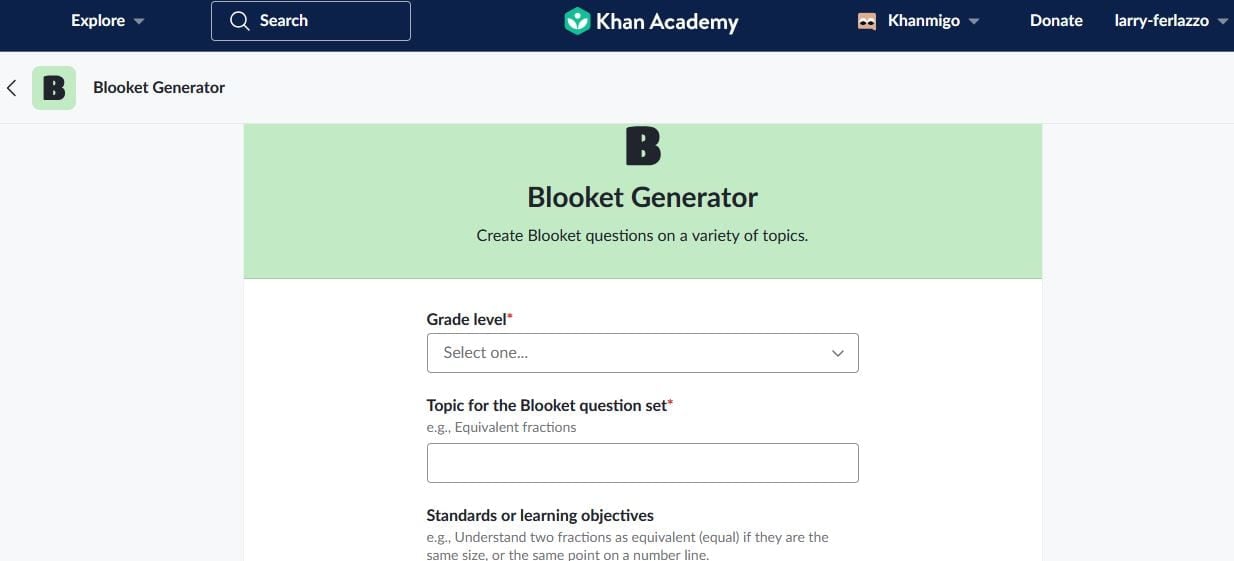The 6-Week Routine to Run a 6-Minute Mile
Or whatever your fastest mile time may be.

Quick reality check: You’re not going to drop minutes off your mile over the course of a week—or two... or three—and you may not even be physically capable of hitting the impressive 6-minute mile running benchmark at all.
"Not everyone can run a 6-minute mile," says Bobby McGee, a 30-year endurance coach (who’s coached a number of sub 4-min milers) with expertise in middle distance, cross country, road, marathon, and triathlon coaching. "An athlete can have the engine but not the form, or may not have the range of motion and get hurt maintaining that speed for that long."
He adds, "The greatest challenge to an athlete is not the aerobic requirement, but managing quality without breaking down...speed kills in this department."
But we can guarantee you this: You will get faster following this 6-week training schedule and it'll improve your VO2 max. What's more: You'll bulletproof your body, strengthen your cardiovascular capacity, and challenge your calves, quads, glutes, and core.
Related: Elite Ways to Build Endurance and Stamina So You Can Outlast Anyone
6-Week Program to Run Your Fastest Mile Yet

Anais & Dax, August
Each week of the plan, you'll be running 2+ times per week and have room for other workouts, too. Some of these training weeks may seem a little light, but McGee says: "With all endurance events, the mile and up, 80 percent of training is all easy running other than the time trial."
Directions
McGee says this program is based on a runner who's already reasonably aerobically fit. So, if you're not used to this type of running in general, tack a couple of extra weeks of easy running and striding onto the front end of this plan to boost your cardiovascular system and endurance.
Perform all your quality speed workouts on "flat, fast surfaces" like indoor and outdoor tracks. If trails and beaches are flat and firm, feel free to take your recovery and endurance maintenance workouts off-road.
Warmup
Complete an easy 15-minute warmup jog. Or, walk, then skip lightly or run for five to 20 minutes. Perform a few dynamic mobility drills: Heel walks, knee hugs, quad tugs, lunges, butt kicks, hamstring kick-outs, etc.- Run a few stride outs with maximum recovery between each.
Cool Down
Walk for a few minutes, then run easily for 5 to 10 minutes. Some light, active stretches will help speed up recovery and restore muscle function.
Related: We Talked to Experts and Read Dozens of Studies. This Is the Best Way to Start Running
Week 1 Prescription
Complete one 1,000m time trial at the beginning of the program and 2-3 easy runs.
1. Time Trial
How to Do It
First and foremost, you need to find your starting point. (Remember to warm up!) Run one time trial of at least 1000m to determine where you are. Run at top effort while maintaining form and control. This is 2.5 times around a standard 400m track. Start at the 200m mark, run to the finish and complete 2 more laps.
"For an athlete to break 6 minutes in the mile, they would have to run an average of 1:29.5 per quarter mile," McGee says. So, if you can run 1,000m in 3:32, you’re already in 6-minute shape! Another accurate 5km race equivalent is 20:50.
2. Easy Runs
How to Do It
Break the run into intervals. Run for 6 minutes, walk for 1, or run for 9 minutes and walk for 1 for a total of 30-60 minutes. Keep the pace very easy so you can maintain a conversation. Invest in a fitness tracker (here are 7 great options) to monitor your pace. You want to keep your heart rate below 70 percent of your max heart rate (think Zone 2 training).
"There's nothing to be gained by going even slightly faster," McGee says. You're only endangering the quality of the workout, so watch your heart rate!
Week 2 Prescription

Andrew Cutraro
Complete two to three easy runs with progressive stride outs. (You can incorporate the stride outs after completing one or two intervals in the run.)
1. Easy Runs With Progressive Stride Outs
How to Do It
Break the run into intervals. Run for 6 minutes, walk for 1, or run for 9 minutes, walk for 1, for a total of 30-60 minutes. Keep the pace very easy so you can maintain a conversation. If you’re using a fitness tracker, you want to keep your heart rate below 70 percent of your max heart rate.
Within these runs, complete 4x sub-10sec stride outs with 1min recovery between reps. Start the first one easily and control it at just more than your regular, easy pace. Then, get faster with each subsequent rep, building up speed until you're going just faster than the goal race pace (while maintaining control!).
Complete the strides either towards the end of the run or after the run. You only need to stride once or twice this week on a sound surface like firm dirt, grass, or a track.
Related: Research Says You Need to Run Less Than You'd Think to See Benefits
Week 3 Prescription
Complete two to three easy runs with stride outs and one time trial at the end of the week.
1. Easy Run With Stride Outs
How to Do It
Break the run into intervals. Run for 6 minutes, walk for 1. Or, run for 9 minutes, walk for 1 for a total of 30-60 minutes. Keep the pace very easy—to where you can maintain a conversation. However, within this run, complete 4x sub-10sec stride outs with 1min recovery in between reps. Start the first one easy and controlled at just more than your regular easy pace.
Then, get faster with each subsequent rep, building up speed until you're going just faster than the goal mile race pace (while maintaining control!). Stride on a sound surface like firm dirt, grass, or a track. Then, add an additional 2x30sec strides. Instead of a 1-minute recovery between reps, slowly walk back to your start position.
*McGee suggests choosing a stride day after your shorter runs and a light pick-up in pace over the last 5 minutes of your longer run.
2. Time Trial
How to Do It
End the week with a 1000m-time trial (2.5 laps) to assess your progress. Try to maintain maximum effort.
Related: The Training Plan to Boost Your VO2 Max
Week 4 Prescription
Complete two VO2 max & speed endurance hill workouts (on different days) and at least two to three easy runs.
Expert Tip
You want to leave at least two days between quality workouts, so you have sufficient rest. McGee suggests scheduling your difficult, quality workouts on Monday, Tuesday, or Saturday. If you know you will run your mile on a Saturday at 10 a.m., then make sure you do quality workouts during that same time slot. You'll set your system up so it's ready to perform.
1A. VO2 Max & Speed Endurance Hill Workout
Make sure you perform this workout first in the week.
How to Do It
Run 5x30sec hill sprints at a controlled effort—about 95 percent while maintaining control—then slowly walk back down the hill, taking an additional 1min recovery rest in between reps.
Next, run 5x1-minute hill sprints and jog back for recovery—also at 95 percent effort (of course, this will be at a slower pace, so 95% of a one-minute effort). If you’re losing form and becoming a bit ragged, slow down.
1B. VO2 Max & Speed Endurance Hill Workout
Try to up the quality since this workout is shorter than 1a, which you completed earlier this week.
How to Do It
Run 3x30sec hill sprints at a controlled effort—about 95 percent while maintaining control—then slowly walk back down the hill, taking an additional 1min recovery rest in between reps.
Next, run 3x1-minute hill sprints and jog back for recovery—also at 95 percent effort. If you find you’re losing form and becoming a bit ragged, slow down.
2. Easy Run
How to Do It
Break the run into intervals. Run for 6 minutes, walk for 1, or run for 9 minutes and walk for 1 for a total of 30-60 minutes. Keep the pace very easy so you can maintain a conversation. If you’re using a heart rate monitor, you want to keep your heart rate below 70 percent of your max heart rate.
Related: These 2 Running Shoes Can Increase Your Speed by 2%, Study Confirms
Week 5 Prescription

Randi Berez
Complete one race-specific endurance session, one speed & strength track workout, and two to three easy runs.
1. Race-Specific Endurance Session
How to Do It
Run a set of 5x400m with 1min recovery in between laps. Pace yourself as you would a mile (shooting for 1:29.5 or 90 seconds per lap, or faster, especially if the 1st & 2nd laps have gone well). See where you stand relative to 90-sec quarters. This will help set your pace going forward, McGee says.
Actively rest for 10 minutes by walking, jogging, or completing mobility drills. Then, run 6 to 10 straightaways, jogging on the turns for recovery; you'll be making full revolutions around the track. (To make it easier, you can walk the 1st 20m or so between each rep). Aim for at least your 400m pace (1:29.5 or 90 seconds per lap), but no faster than 21sec per 100m.
2. Speed & Strength Track Workout
How to Do It
1st set - Run 5-8x200m at a controlled effort—about 95 percent—with a 100m jog or brisk walk recovery at the same time it took you to run the 200m (or no more than 10sec slower than it took you to run 200m).
McGee advises: “Run fewer reps and hit your target time rather than try to do all 8 at a slower pace. Also, don’t go much faster than 41/42sec per 200m. Actively rest 7-10min
2nd set: Run 300m, rest 20sec, then run 200m at your best effort. "Achieving 63sec or better for 300m and then achieving a 40 to 42sec 200m ought to put you in a good position going into your 6-minute mile attempt," McGee says. Cool down for 10-15min and follow with stretching.
3. Easy Run
How to Do It
Break the run into intervals. Run for 6 minutes, walk for 1. Or, run for 9 minutes, walk for 1 for a total of 30-60 minutes. Keep the pace very easy—to where you can maintain a conversation. You want to keep your heart rate below 70 percent of your max heart rate.
Related: Unsanctioned Racing Is the Most Fun You Can Have Running
Week 6 Prescription
Do one specific endurance track workout, one easy pre-mile workout, and two to three easy runs.
Tip: Pacing is everything. "There’s no putting time in the bank when you’re running the mile," McGee says. "Go out conservatively, build, then finish strong; an even pace brings PRs."
Day 1: Mile-Specific Endurance Track Workout
How to Do It
Complete this workout at least 5 days before your 6-minute mile goal day. Complete 5-6x300m with 2-3min recovery in between laps. You’re not aiming for speed here; aim for no faster than 1:03s per 300m.
Day 2: Easy Run
How to Do It
Break the run into intervals. Run for 6 minutes, walk for 1. Or, run for 9 minutes, walk for 1 for a total of 30-40 minutes. Keep the pace very easy—to where you can maintain a conversation. You want to keep your heart rate below 70 percent of your max heart rate.
Day 3: Rest
Take it easy. Today is a rest day.
Day 4: Easy Run With Stride Outs
How to Do It
Break the run into intervals. Run for 6 minutes, walk for 1. Or run for 9 minutes, or walk for 1 for a total of 30 minutes. Keep the pace very easy—to where you can maintain a conversation. You want to keep your heart rate below 70 percent of your max heart rate. At the end of the run, or after, complete 4 stride outs, as well as 1 additional stride out at your race pace (45sec).
Day 5: Rest
Rest up today.
Day 6: Easy Pre-Mile Workout
How to Do It
Jog for 10 minutes and go through your warmup (strides and drills). Then, run 400m on a track or run a 90-second effort at your race pace.
If you're running your mile in the morning, complete the Easy Pre-Mile Workout the evening before. If you're running your mile in the evening, complete the Easy Pre-Mile Workout the same day, just in the morning.
Related: How to Beat Nerves and Anxiety Before a Race
Race Day Tips

Gallery Stock/Ali Engin
These are McGee’s top tips for race day.
Warmup: Stick to your usual pre-quality workout routine.
Pacing: Aim for 68-70 seconds on the first lap (409m). Going out too fast will hurt you later. Hold that pace, or try to pick it up slightly on the third lap. Make sure you have enough energy for the final lap.
300m to go: Lean slightly.
200m to go: Increase arm drive.
100m to go: Quicken your stride and get on your toes, but maintain form and relax.
Even splits are key, so practice with a watch to achieve consistent lap times. Don't "dig" at the end. This ruins your form and slows you down. Be patient. It takes time to build strength, speed, and perfect form. Don't get discouraged if you don't hit your goal immediately.
Race Day
Warmup
- Walk, then skip lightly, or run for 10-15min
- Perform a few dynamic mobility drills: Heel walks, knee hugs, quad tugs, lunges, butt kicks, etc.
- Run four stride outs with maximum recovery between each. If nervous or a little tight, add up to 4 more strides, but rest sufficiently between each. Calmly walk about and stay loose for 5 minutes before the start.
Rehearsal Lap
How to Do It
The evening before an a.m. mile race, or the morning of a p.m. mile race, run a lap (400m) at your desired race pace—around a 1min 28sec effort, but no faster.
“The athlete will figure that desired pace feels slower than expected and will assist in creating the correct pace on race day, avoiding the PR-killing mistake of going out too fast—a fatal error in the mile."
Cool down for 5-10 minutes.
Now, go kill that 6-minute mile!









![[DEALS] iScanner App: Lifetime Subscription (79% off) & Other Deals Up To 98% Off – Offers End Soon!](https://www.javacodegeeks.com/wp-content/uploads/2012/12/jcg-logo.jpg)

































































